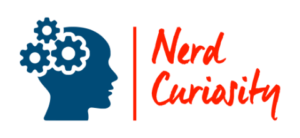Traveling can unlock new perspectives, foster innovation, and bridge the gap between diverse teams. As a product manager, you might find yourself a pivotal connector in this dynamic ecosystem, your role a blend of strategy, communication, and leadership. Imagine jet-setting to different corners of the globe, shaking hands with international clients, or mentoring teams across continents. Could such adventures be a staple in your career?

Product managers do indeed embark on trips, albeit the frequency varies based on their industry, company size, and particular role within the organization.
As you read on, anticipate a detailed journey through the landscape of a product manager’s travel itinerary. You’ll gain insights into why travel is necessary, the types of trips typically taken, and the potential impact on a product manager’s work-life balance. Whether your passport is already brimming with stamps or you’re considering how a career in product management might fit your wanderlust, you’re in the right place.
The Role and Responsibilities of Product Managers

As a product manager, your role bridges the gap between concept and execution. You’re tasked with guiding a product’s journey from an initial spark of an idea to a fully-fledged offering in the market.
Product Vision and Strategy
Crafting a product vision and strategy forms the essence of your job. It’s your mission to foresee and articulate the future of the product, ensuring that every feature aligns with the overarching goals. Your strategy is like a blueprint; it should clearly communicate the purpose and the path to achieve your shared vision.
Product Development Process
From design to development, you play a pivotal role in orchestrating the product development process. Your insights into technology trends inform timely decisions that keep the software user-centric. Throughout this journey, your collaboration with the development team ensures that each feature enriches the user experience.
Interdepartmental Collaboration
You’re the linchpin for interdepartmental collaboration, connecting the dots between engineering, UX, business, and more. You must lead discussions with marketing, sales, finance, operations, and legal teams, ensuring that all internal stakeholders are aligned with your vision.
Skills and Expertise
Your skills are a unique blend of soft skills, like communication and leadership, and technical skills, including an understanding of data and technology stacks. This toolkit empowers you to navigate complexities with ease and inspire the team. Renowned industry figure Martin Eriksson sees you as akin to the CEO of the product, wielding a rich combination of expertise.
Performance and Metrics
Finally, your acumen for measuring performance through data is crucial. You must track key metrics, assessing ROI against the budget and business objectives. Your commitment to customer success, retention rates, and other success indicators is what ultimately defines the triumph of your product.
Travel Requirements and Destinations

In your role as a product manager, you’ll often encounter travel as an integral component of your work, connecting you with vital stakeholders from various destinations.
Frequency and Purpose of Travel
Your travel schedule largely hinges on your company’s business model and its engagement with partners, customers, and other stakeholders. For example, trade shows, partner visits, customer visits, as well as training and development opportunities, are common venues that require your presence. If your craft focuses on global markets or you are positioned higher up the ladder, expect an uptick in trips to forge and sustain critical business relationships. It’s not just about the frequency but also the purpose behind each journey—whether it’s to collect customer feedback, understand customer needs, or showcase best practices in your field.
Experiences and Adaptability
Your ability to adapt on the road spells success for both you and your company. Experiencing different cultures and business environments firsthand will sharpen your soft skills, crucial for navigating diverse business terrains. Hence, adapting to varied customer landscapes forms the backbone of your travel endeavors. Training and mentoring involving travel empower you to further hone your expertise and enrich your professional toolkit with varied insights and practices gleaned from a multitude of locales.
Work Environment and Daily Practices

The life of a product manager is dynamic, balancing time between traditional office settings and traveling for business. You’ll often be juggling various responsibilities from internal meetings to on-site client interactions.
Office vs. On-the-Go
In the office, your day is typically structured around meetings, strategy sessions, and collaboration with cross-functional teams. Although remote work has become more prevalent, giving you the flexibility to work from different locations, face-to-face interactions are still invaluable. Travel is a staple for product managers, as visiting trade shows, understanding market trends, and maintaining client relationships often require being on the go. You may find that the amount you travel can increase as you ascend the corporate ladder.
Time Management and Prioritization
Effective time management is key in your role. You’ll need to prioritize tasks rigorously, often planning around fixed dates and shifting resources. Crafting strategic roadmaps and setting a clear timeline for deliverables helps keep projects on track amidst the demands of both office and travel commitments. Always remember, your ability to plan effectively goes a long way in determining the success of your products.
Use of Project Management Tools
To keep up with the diverse aspects of your job, leveraging project management tools is essential. Whether you’re using Jira for agile project management or an API to integrate with other platforms, these tools help streamline your workflows and communication. In an office environment, they are crucial for tracking progress, while on the road, they ensure you stay connected and decisions can be made promptly. If you’re part of a Scrum team, these tools also facilitate sprint planning and review processes effectively—regardless of your physical location.
Career Growth and Professional Development

Embarking on a career as a product manager, you’ll discover that your growth and professional development are essential for success. To thrive, you need a robust plan and a commitment to continuous learning.
Advancing in Product Management
Your journey in product management often begins as a junior or associate product manager. Leadership, specialization, and a deep understanding of business objectives are the bedrock of your progression. The typical career path includes stepping stones like senior product manager, product lead, and eventually, VP of Product in large organizations. Here’s a brief outline of the path:
- Associate Product Manager: Focus on learning the ropes.
- Product Manager: Develop full-fledged product strategies.
- Senior Product Manager: Take on complex products and multiple teams.
- Product Lead: Oversee strategic direction across several products.
- VP of Product: Shape business objectives and product visions at a high level.
In these roles, your success is defined not just by your education but also by practical experiences that enhance your capabilities.
Training and Learning Opportunities
To stay relevant in your field, training and ongoing education are key. Tap into a myriad of learning opportunities to sharpen your skills. These might include formal courses, certifications, or participating in workshops highlighting best practices. For online resources, consider platforms like Product School for structured learning paths. Embrace these opportunities:
- Workshops/Seminars: Engage with the latest trends and methodologies.
- Mentorship Programs: Gain insights from experienced product leaders.
- Online Courses: Expand your knowledge on topics like UX design or market analytics.
Industry Trends and Future Outlook

In exploring the future of product management, you’ll uncover how evolving roles, market shifts, and technology impact travel and work patterns. Keep these dynamics in mind as you navigate the landscape.
Evolution of the Product Management Role
Your role as a product manager is no longer about just defining the product’s roadmap; it’s now much broader. With a focus on customer needs and user needs, specialization has become crucial. Expect to collaborate cross-functionally and transcend traditional organizational silos.
Impact of Market Changes on Travel
Travel for product managers isn’t just about meetings. It reflects a deep dive into markets and an alignment with the business model. As market trends evolve, you might find your travel itinerary adjusting to follow suit.
Technological Innovations
Technology in product management is a game-changer. Adapt to the latest software tools and platforms, such as APIs, that facilitate remote collaboration, possibly reducing the need for travel.
Best Practice Adoption
Consider the importance of Amazon‘s role in shaping retail and software product management. Their use of technology and market position sets a trend for effective product management practices that others follow, often requiring less travel as digital coordination improves.
Conclusion

Travel is an integral part of a product manager’s role, but the extent varies by industry, company size, and the nature of the product. As a product manager, you may journey to trade shows for networking, explore new markets, or even work closely with remote teams. The frequency of your travels is contingent upon what’s required for your product’s success.
An insightful observation is that travel tends to scale with seniority; an Associate Product Manager might be on the move for training, while higher-level managers engage in strategic partnerships and company expansion initiatives. Be mindful of the balance; too much travel can impact your work-life equilibrium.
Your travel destinations can range from visiting local agencies to flying overseas. It’s vital to embrace these opportunities for professional growth and to gain a broad perspective on the market landscape.
Remember, your travels are not just for face-to-face meetings; they’re also for understanding different consumer behaviors and adapting your product to fit multiple markets. Stay open to these experiences, and consider the vast potential benefits they hold for both you and your product.
